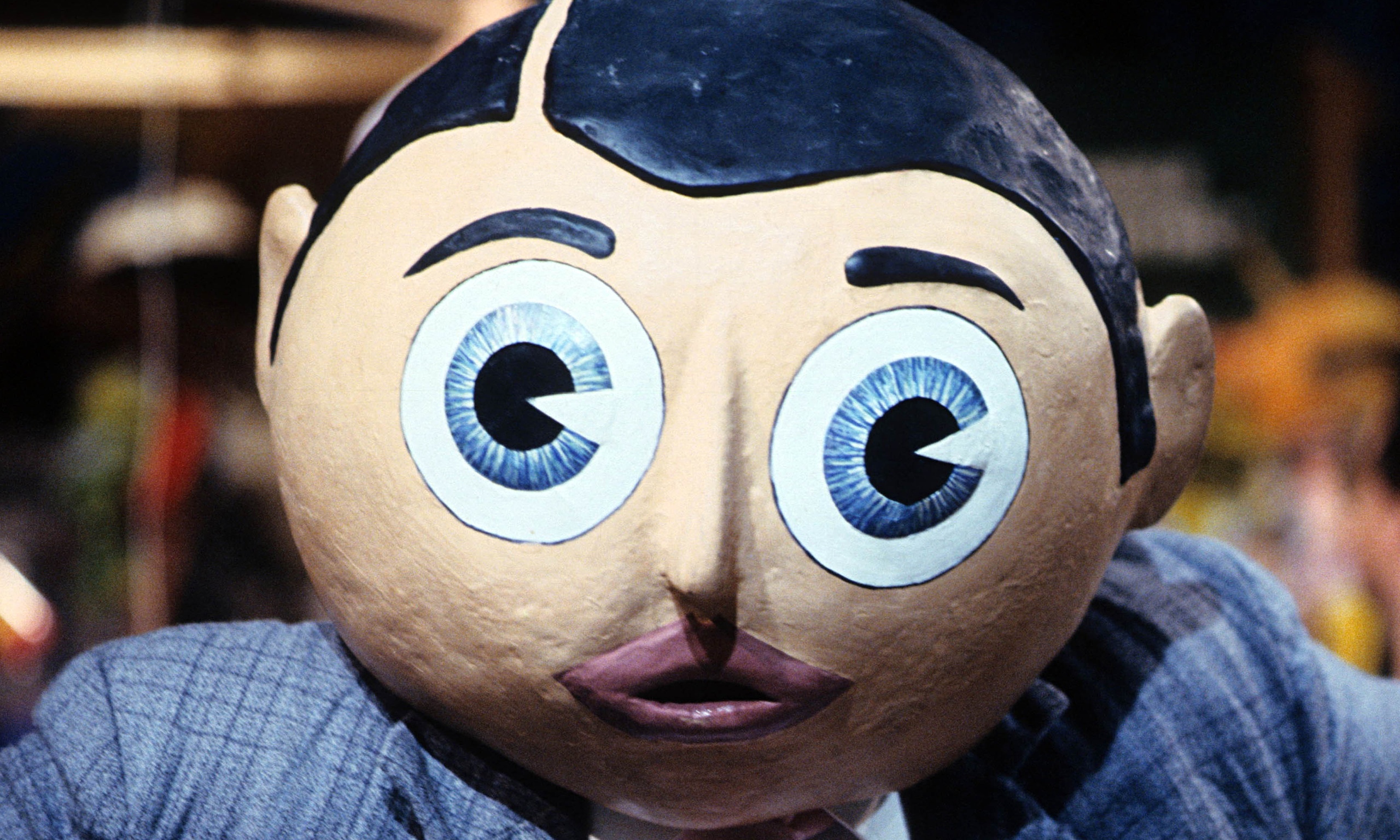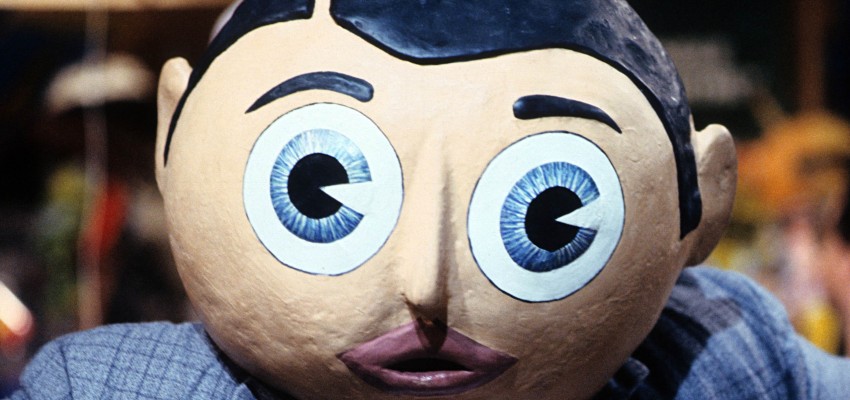By Josh Friesen (Contributor) – Email
Print Edition: September 17, 2014
On the surface, Frank appears to be the polar opposite of Lenny Abramson’s prior works, which were characterized by naturalistic dialogue and settings that emphasized the grey and drab side of Ireland. In contrast, Frank sports a bright palette and contains a group of incredibly eccentric characters, including the titular Frank, who wears a papier-mâché head. However, as the film progresses, the eclectic tone and colourful visuals gently fall away to reveal a heartbreaking meditation on mental illness.
We meet our protagonist Jon (Domhall Gleeson) wandering the beach attempting to find inspiration for his music. He is a mediocre keyboard player and vocalist, but is passionate about his music. Jon is our entry point into the world of Frank, as well as our narrator. The voice-over narration, a device which is usually used as a lazy substitute for acting, in this case is used effectively; Jon’s voice provides the chaos with some form of structure and allows him to have a conversation with the only character capable of having a conversation in the film: himself.
Jon meets and quickly falls in with Frank’s band, the Soronprbs (which has a deliberately unpronounceable name). A band whose music is equal parts strange and wonderful, they are in need of a new keyboard player because, when Jon meets them, their current one is trying to drown himself in the ocean.
In a darkly comic nod to This is Spinal Tap, we later learn that Jon is actually their third keyboard player. The band is managed by Don (Scoot McNairy), an ex-mental patient who was committed for his sexual preference for mannequins. There are four members beside Don and Jon, but two of them are never fully fleshed out. They are given the clichéd excuse of being foreign and we soon forget about them. The remaining two are Maggie Gyllenhaal, who gives a wonderfully petulant performance as the theremin-playing Clara, and Michael Fassbender as Frank.
The gamble of casting Fassbender in a completely masked role pays off, as he delivers surely one of the greatest masked performances ever. The range of emotion he is able to express through the papier-mâché head is outstanding, and it goes without saying that this is his most humourous role yet (dark though it may be). He benefits from a well-written script, but still carries the film with his fine physical performance.
The first two-thirds of the film, while refreshingly unique, suffers at times from inconsistent pacing. The editing fails to balance the conflict between the choppy montage sequences and the meandering band practice scenes. Where the film brings itself together is in the final act, when the bright mask of the film is removed to reveal something profound underneath. As I hinted at earlier, one of the running themes of the film is mental illness and it deals with this hard subject in a nuanced way.
More interesting questions arise in the film but I feel that to discuss them would take away from the viewing experience. All I can do is encourage you to seek out this film. It’s not a perfect film, but in a summer full of blockbuster disappointment, it’s a distinctly original treat.



